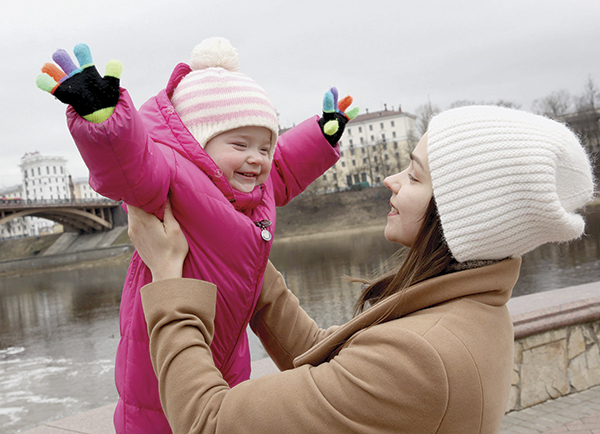Statistical data from recent years leaves no doubt: our country’s population is now visibly increasing. Sceptics say migration processes are behind the rise, which is partially true, since 28,400 people arrived in Belarus last year, against 9,900 who left (a rise of 18,500). However, we’ve also seen rising births for several years.

The Deputy Chair of the National Statistical Committee, Zhanna Vasilevskaya, is optimistic that the state demographic policy is reaping results. Birth rates have been steady for three years, reaching 12,5 per 1,000 people, with the highest level registered in 2015, in Brest and Minsk Regions (at 13,5).
“Last year saw the largest number of newborns over the last five years — at over 119,000,” adds Ms. Vasilevskaya. “This is almost 500 more than in 2014 and 11,000 more than 2010. Minsk leads, with almost 23,000 babies born in 2015 (a fifth of the total number countrywide). Just over 19,000 newborns were born in Minsk Region, followed by Brest and Gomel Regions.”
Last year, natural population growth was registered in 83 cities and 24 towns (against a rise in 51 cities and 17 towns respectively five years ago). Even rural areas are showing population growth, in Minsk, Brest and Mozyr Districts. In total, last year, the country’s population rose by 17,500 people. As of early 2016, the figure reached 9,498,000, with the greatest share residing in the capital. Almost 1.96mln people live in Minsk (every fifth resident). Gomel Region leads among the regions, with 1.423mln people (every seventh resident).
Ms. Vasilevskaya notes changing trends, saying, “In recent years, the number of children born within wedlock has risen. In 2010, 80 percent of newborns were born to married couples, and this figure increased to 86 percent in 2015. Young people are waiting longer to have children, reflecting education, a desire to pursue their career, and marriage ages rising. Over the last five years, the number of births to women aged 15-19 years has fallen by 12.6 percent. For those aged 25-29 years, the figure has risen by 13.6 percent. Meanwhile, for those aged 30-34 years, births have risen by a third, and births to women aged 35-39 have risen by 50 percent.”
Last year, 1,316 women gave birth to twins and 21 women had triplets (five years ago, these figures stood at 1,027 and 18). Half of all births are second or third children (or greater). Last year, Brest Region took the lead in this parameter, while Minsk led in the number of second children.











